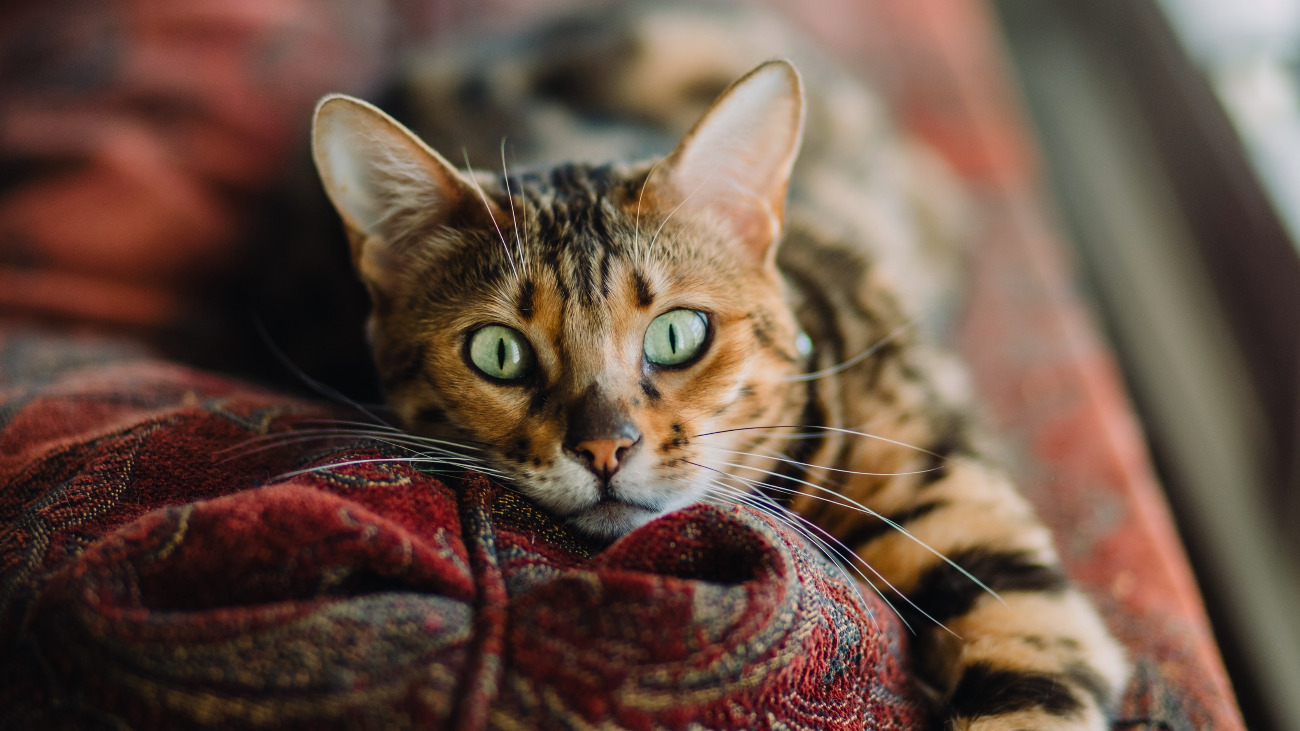Unlike dogs, who pant when stressed or hot, cats shouldn’t breathe heavily and it’s generally a sign of a serious problem if they do.
Heavy breathing should always be checked out by a veterinarian at the earliest opportunity.
Heavy breathing can mean different things to different people. As vets, we generally separate breathing issues anatomically – the problem is either with the upper respiratory tract (the nose and throat), or the lower (the lungs and surrounding area).
The lower respiratory tract is what most people refer to when they talk about heavy breathing, but we’ve included the upper respiratory signs here so that you can see the difference.
Upper respiratory tract ‘heavy breathing’ is really just noisy. Snot, foreign bodies and tumors can all cause increased noise in this area. The breaths are likely to be of a normal rate and depth but noisier, which could be interpreted as heavy. This is no different to you trying to breathe through a snotty nose, and will often come with other signs such as watery eyes. This sort of problem is usually more minor and rarely an emergency, although it does still warrant a vet visit.
Lower respiratory tract ‘heavy breathing’ is much more serious and warrants an immediate vet visit. This type of heavy breathing could be shallow and fast – such as a pant – or fast but deep, with effort. You may notice your cat sitting strangely with their front legs held away from the body to allow more chest movement, or with their head and neck stretched out so there’s no restriction on airflow. You may also notice their abdomen moving with the effort of the breath, or a ‘biphasic’ breath movement, which looks like the chest rising, then the abdomen moving too as if to pump more air.
They’re likely to be lethargic, unwilling to move, and sometimes aggressive – they’re scared and trying to concentrate on breathing, not on being fussed. They often stop eating, too, saving every ounce of concentration for keeping the air moving. Blue lips or paw pads are sometimes present and are a very bad sign.
What is a normal breathing rate in cats?

Just like us, cats have the ability to increase their breathing rate if required, for instance, if they’re exercising. But once they’re at rest or asleep, the body should return to a normal rate. This should be less than 30 breaths a minute, and anything more than 40 needs an emergency vet visit. Be sure to only count the breaths in, not out, and make sure the cat is resting, hasn’t just finished playing, and isn’t purring in order to get an accurate count.
What could it be?
For upper respiratory tract breathing, the most common cause of a problem is feline flu, which can cause noisy breathing due to blocked nasal passages. Other causes include a nasal foreign body, dental disease, nasal tumors, and soft palate problems. Remember, this is ‘heavy breathing’ in the sense that it’s noisy, not that there’s any extra effort required.
For lower respiratory tract breathing, there are a whole host of possibilities. Heart disease causing fluid on the chest is probably the most common, even if your cat doesn’t have a known heart issue. Lung and chest tumors, FIP, diaphragm trouble, asthma, and pneumothorax are also things that your vet will need to look into, especially if your cat has a normal heart.
What should I do?
If you notice heavy breathing in your cat, you should take them to the vet. Upper respiratory ‘heavy’ breathing (noisy, but with no effort, no panting, and a normal rate) should be seen within 24 hours. Lower respiratory tract breathing (increased rate or effort) should be seen as an emergency as soon as possible. Try to keep your cat calm and don’t restrain them too much- a large carrier with a lift-off lid allows them to have plenty of space and gives the vet emergency access.
What will happen at the vets?
Depending on your cat’s state, your vet might immediately put them into oxygen to help them stabilize, and administer medications such as diuretics, mild sedatives (to stop them from panicking) or anti-inflammatories. They’ll often do this before stopping to talk to you and get a history, as time is of the essence. X-rays are often a really useful tool here and are sometimes performed conscious in very ill cats if they’ll lie still long enough. Since air-filled lungs on an x-ray are black and most other things are shades of white, it quickly tells us where the problem is – for instance, whether a lung has collapsed or whether there are tumors in the chest. It can also hint at a heart problem.
Your cat will almost certainly need more investigations further down the line, but this quick x-ray helps your vet to make treatment decisions, like draining fluid from the chest or which drugs to use.
Remember, heavy breathing in cats is generally serious and warrants an emergency vet visit, especially if they require extra effort to breathe or if their breathing rate increases. Familiarising yourself early on with your cat’s normal breathing can help you to identify if it becomes abnormal, so this is a good habit to get into.
Did you find this article helpful?
